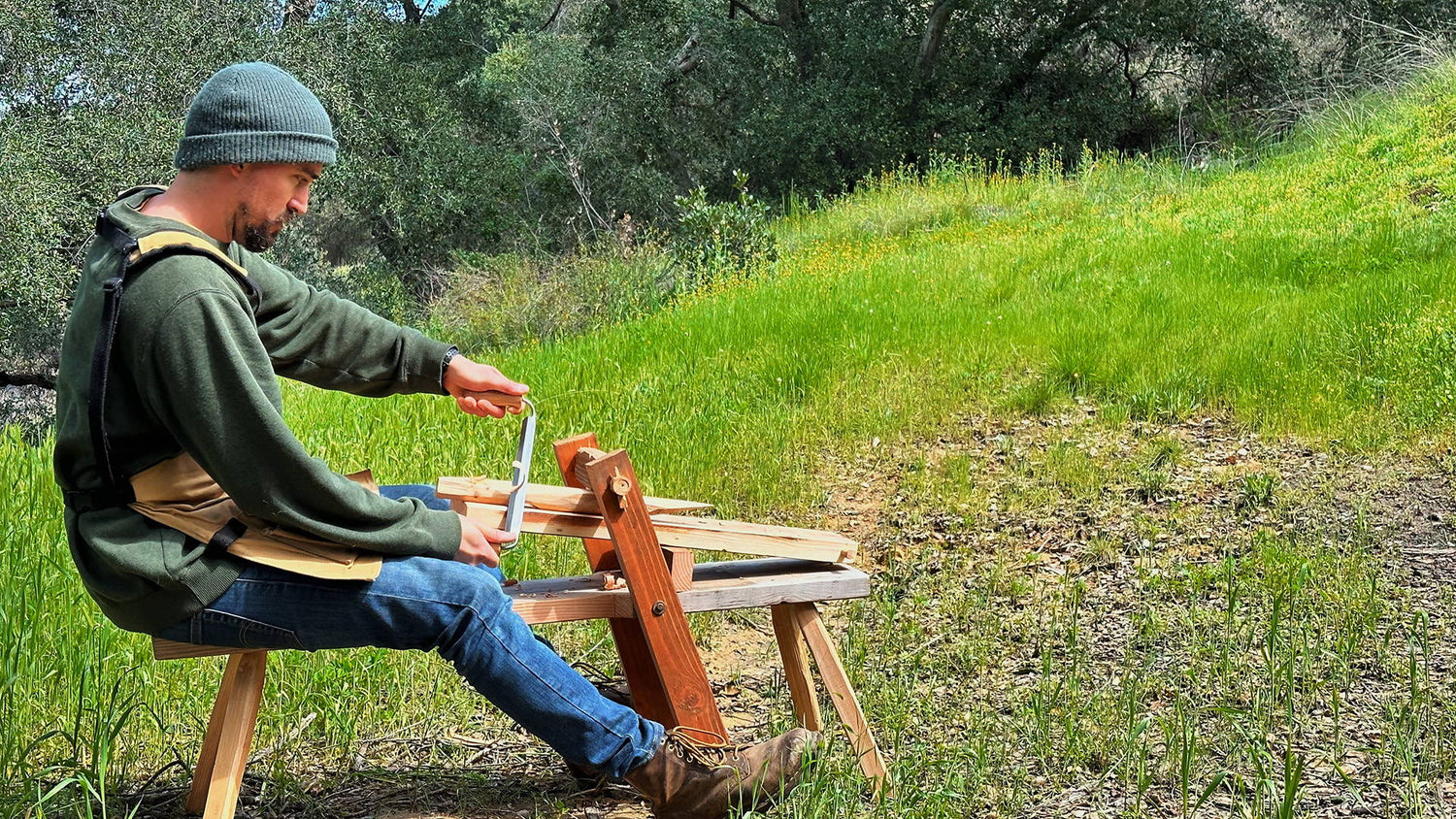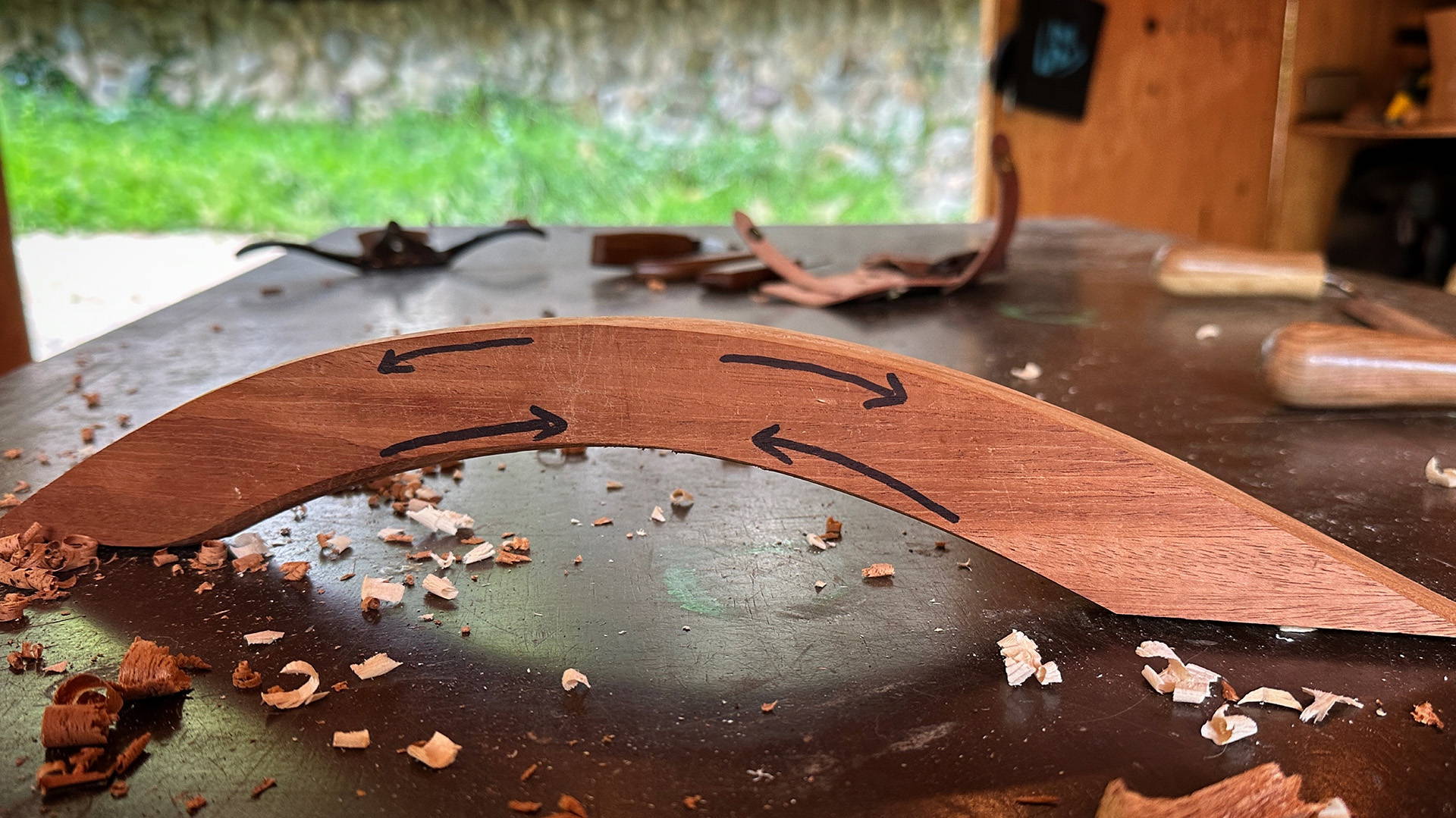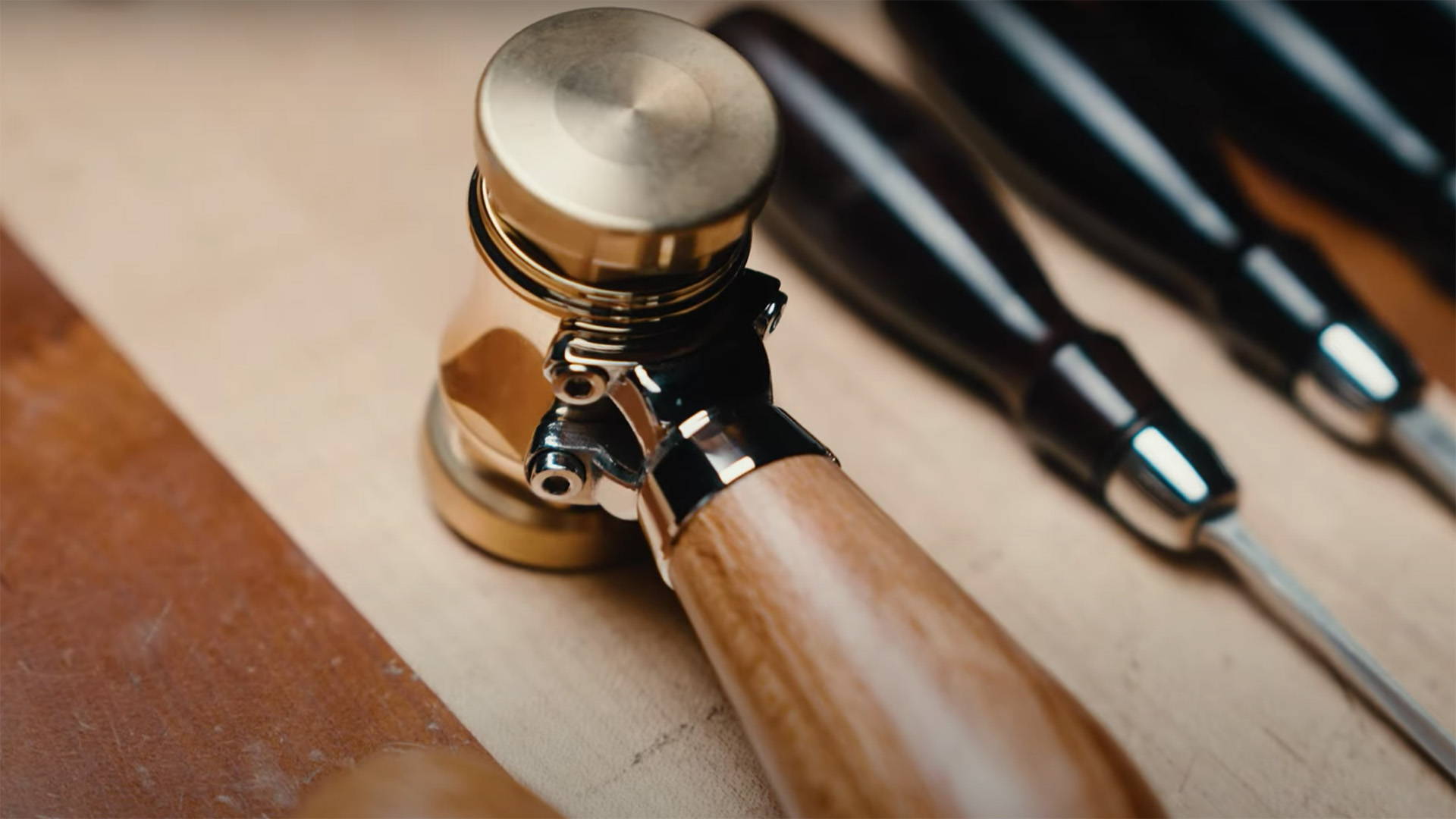I love my power tools. But few tools are as cool as the ones used in green woodworking.
Green woodworking is an old-school form of woodworking that uses freshly cut, unseasoned lumber (called green wood) and simple hand tools to create everything from furniture to intricate carvings.
What's so cool about it is that you can build things from fallen trees around your home — even branches and roots. Not only is it more sustainable. It's a lot cheaper than a trip to the hardwood store.
And even cooler are the tools involved.
Today, I'm going to cover the hand tools traditionally used in green woodworking — including what they’re for and why they’re special.
Roll up your shirt sleeves. It’s going to get sweaty (and a little sappy).
FYI: Hand saws are very obviously omitted from this list. There are just too many styles to fit here, but I'll cover them in a future post.
Already drooling? Check out our collection of hand-forged hand tools — perfect for green woodworking.
TABLE OF CONTENTS
- What is Green Woodworking?
- Essential Tools for Green Woodworking and How They’re Used
WHAT IS GREEN WOODWORKING?
As the name implies, green woodworking involves working with wood that's fresh from the tree.
It uses tools and techniques specialized to this raw material, and common projects include everything from rustic furniture to hand-carved spoons and sculptures.
Because of the simple and portable nature of its tools, you can practice the craft almost anywhere — from your backyard to a campsite.
And while the history of green woodworking dates back thousands of years, it's still embraced by both hobbyists and professional woodworkers today.
ESSENTIAL TOOLS FOR GREEN WOODWORKING AND HOW THEY'RE USED
HATCHETS
Hatchets are the Swiss Army knife of green woodworking and used for a variety of tasks.
They're perfect for felling small trees, chopping off branches, and rough-shaping furniture components. With a hatchet, you can take a piece of wood from log to lumber without breaking a sweat. Ok, maybe a little sweat. Ok, maybe a lot.
They’re often the first tool to touch the wood — though you could build a piece of furniture with a hatchet alone (here's how to cut to a line with a hatchet).
There are a lot of different styles of hatchets. In general, use splitting hatchets to split logs and single-bevel carving hatchets for more precise work. The one flat face of the latter makes it easier to chop to a line.
FROES, MAULS, AND WEDGES
Froes are another essential tool in the green woodworking arsenal.
With a wide narrow blade and a handle, they're used primarily for splitting logs and boards along the grain. But not in a chopping motion like a hatchet. Instead, they're placed on the end grain of the wood and struck with a froe mallet (or maul).
Mauls, often made from a single piece of dense hardwood, are the peanut butter to your froe's jelly. They're designed for striking steel tools without damaging them.
Wedges come in handy for large or stubborn pieces of wood. You drive them into a split to help open it up and come apart.
The power of these tools isn't just breaking logs into smaller pieces. By splitting along the grain, you get stronger pieces resistant to snapping.
This creates components that are perfect for chair legs — and it's why some woodworkers even use froes to split kiln-dried lumber.
All in all, froes, mauls, and wedges are the holy trinity of wood splitting.
DRAWKNIVES
Drawknives might look basic — but they're one of the most useful and versatile tools in green woodworking.
You can use them for removing bark from live edges, rough shaping lumber, refining furniture components, and even shaving your five o'clock shadow.
The draw-knife is pulled towards the user (it's not called a push-knife) to shave off thin strips of material or remove massive chunks of waste. It can cut bevel-up or bevel-down depending on the type of cut you're after and is often used in tandem with a shavehorse.
Ideal for shaping spindles, round tenons, and curved components, the drawknife should be part of every woodworker's tool chest. Even if you don't work with green wood.
Here’s all the ways you can use a drawknife.
SPOKESHAVES
Spokeshaves are like the supporting actor who doesn't get top billing but steals every scene they're in.
In essence, they're a smaller and more refined version of drawknife with a sole that lets you have total control over cutting depth — perfect for shaping and refining flat, round, and curved surfaces alike.
You can push or pull them along a workpiece depending on the grain direction and your comfort. And the level of control and precision these tools offer can leave even the most modern power tools green with envy (pun intended).
Spokeshaves are perfect for green woodworking tasks like refining chair spindles, creating rounded surfaces, or just giving your project that final touch before you apply the finish.
BRACES AND AUGER BITS
Braces and auger bits are the joinery power-couple of green woodworking — and answer the modern question How did they drill holes before electricity?
A brace is essentially a hand drill with a crank-shaped handle. Auger bits have a screw-shaped tip that bites into the wood and pulls the rest of the bit through the material as you turn the brace.
It takes a bit of elbow grease, but these tools together let you drill clean and precise holes pretty fast.
In green woodworking, braces and auger bits are essential for creating round mortises — which with their round tenon counterpart, form the fundamental joint in spindle and staked furniture.
You can easily find them at any old tool swap meet. And though they may not look it, they're a lot of fun to use.
ADZES
An adze is a hand tool that dates back to the Stone Age (seriously) and proves that old doesn't necessarily equate to obsolete. T-850 Terminators agree.
It consists of a stout handle and a scooped blade. Sort of like the violent, toe-chomping ice cream scoop of woodworking.
With a steady swinging motion, the adze's blade strikes the surface of a piece of wood and scoops out material. It can be used to rough shape flat areas or carve out hollows.
An adze can be especially helpful for roughly saddling chair seats (usually followed by an inshave or other tool to refine). Some woodworkers even use it to add texture and visual interest to their furniture surfaces.
INSHAVES
An in-shave, or scorp, looks like a drawknife your uncle sat on after third helpings at Thanksgiving dinner. Translation: The blade is curved.
This curve allows it to scoop out hollows in wood, creating the perfect seat for your chair — or even a beautiful salad bowl (which your uncle didn't touch because, well, you know). The handles on the ends are often splayed out and up so you can get deeper into the nooks and crannies of concave curves.
In green woodworking, the inshave is your best friend when you're looking to achieve those beautifully rounded hollows. Just like the adze, it's primarily for roughing out shapes. But, with a bit of skill and patience, it can also be employed for finer work.
After an adze has had its wild fun, the inshave steps in to refine the work, sneaking into areas the adze found too tight and delivering a smoother finish.
It takes some practice to get the hang of and they can be difficult to find, but inshaves are truly a gem of the hand tool world.
CARVING KNIVES
Carving knives come in all shapes and sizes, and can be used for everything from making tiny spoons to adding the fine details that turn a piece of furniture into a masterpiece.
Sloyd-style knives, for example, are the bread and butter (or should I say wood and whittler) of your toolkit. This trusty blade is your go-to for general carving, capable of creating both broad and fine details.
The smaller straight blades on bench knives (or chip carving knives) make them ideal for chip carving and super detailed work.
Then you have the hook knife, or spoon knife, that adds a bit of curve to your repertoire. This knife specializes in hollowing out concave shapes — think spoons, bowls, and the delicate contours of a chair's armrest. The hook knife is the secret behind those intricate curves that leave people wondering, "How did they do that?"
Each of these knives plays a vital role in green woodworking, carving out the character and personality of each piece.
We carry a 3-piece carving knife set that comes with a sloyd-style knife, chip carving knife, and a hook knife — all packaged in a convenient leather roll.
THE SATISFACTION OF SIMPLE TOOLS
Whether you're a brand new woodworker (greenhorn?) or a seasoned pro (kiln-dried?), there's a real joy in using the tools of green woodworking.
As with any skill, practice is key. But there's no feeling like seeing a pile of logs from your yard turn into a functional piece of furniture...
So here's to twisted sticks and sappy fingers.
Dying to dole out some drawknife shavings? Here's all you need to know about drawknives.
What are your thoughts on the tools above? Any you think I missed? Let me know in the comments below!
Follow us on Instagram @katzmosestools, on TikTok @katzmoseswoodworking, and check out my YouTube channel for more great woodworking content...
And as always, STAY SAFE IN THE SHOP!











1 comment
Qumran zaigham
Hi,
We are a manufacturing company specializing in handmade axes, knives, copper Damascus billets, and fully custom-forged pieces. If you have your own designs, we can also produce them with precision and top quality.
We can help expand your product line with high-quality, fast-selling items that add real value to your business.
Best regards,
Qumran Zaigham
Hi,
We are a manufacturing company specializing in handmade axes, knives, copper Damascus billets, and fully custom-forged pieces. If you have your own designs, we can also produce them with precision and top quality.
We can help expand your product line with high-quality, fast-selling items that add real value to your business.
Best regards,
Qumran Zaigham